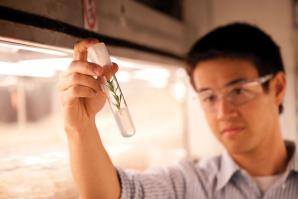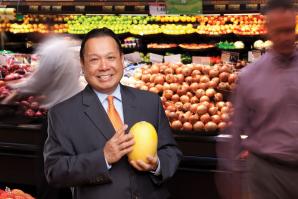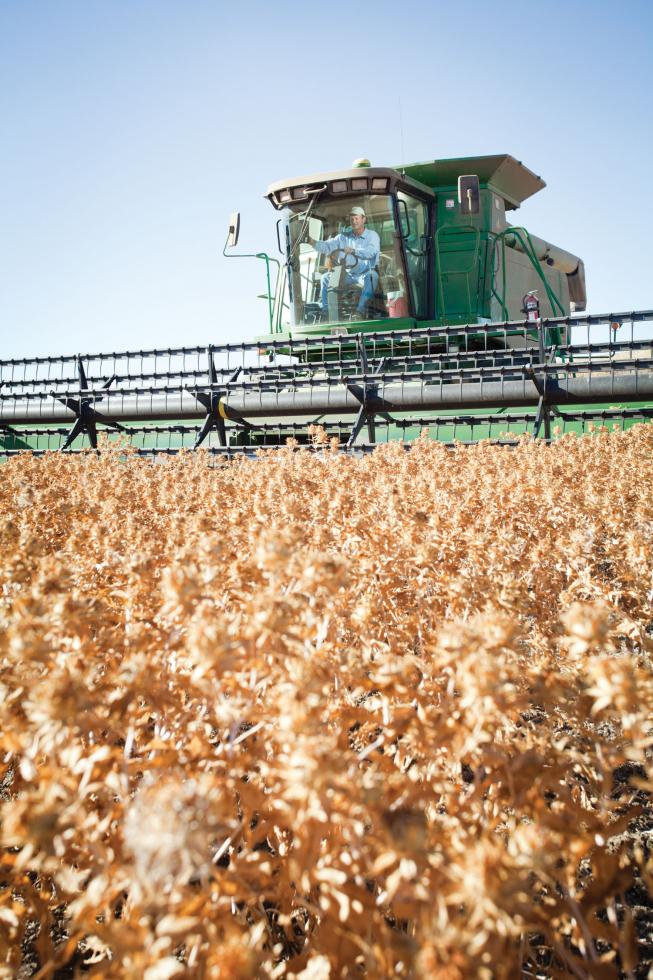Yolo County is doubly blessed. Within its boundaries lie some of the nation’s richest farmland; the open expanses also make it a prime place to develop solar energy.
Yolo County is doubly blessed. Within its boundaries lie some of the nation’s richest farmland; the open expanses also make it a prime place to develop solar energy.
Both enterprises line up with key ideals residents are believed to hold dear: producing healthful locally grown food and fostering green technology.
Now the county rich in both agricultural history and environmental innovation is in a quandary as leaders and developers look to find a balance that keeps the fertile soil producing its world-feeding crops while allowing green energy production to flourish.
Facing resolution is how to address a recent proposal by SunPower Corp. along with developers Angelo K. Tsakopoulos and Phil Angelides to construct an 80-megawatt solar power facility on 688 acres that could power about 25,000 homes.
Farm boosters protested the plan and petitioned the Yolo County Board of Supervisors, who drafted an ordinance making it more difficult for solar facilities to go onto prime farmland when nearby less-fertile land is available. The Davis City Council has asked for more flexibility in the ordinance.
“The situation is not the what, it’s the where,” says John Young, Yolo County’s agricultural commissioner. “There are 653,000 acres of total land mass in Yolo County, and only 40 percent of that is considered prime farmland. The rest of the farmland that’s less productive may be appropriate for those facilities.”
The problem with that, city of Davis and solar companies argue, is that the suggested alternative land is farther away from the urban grid, and constructing power lines from the solar facilities would be both cost prohibitive and potentially invasive to wildlife habitats.
Fifth-generation farmer Fritz Durst, a longtime advocate for sustainable practices, says it would be more logical for solar companies to build small-scale facilities in urban spaces rather than large-scale projects outside the city core.
“Why do we have to put solar panels way out in the countryside when people could just be generating electricity on their own roofs? Or parking lots? he asks.
“I’m always looking for a shade tree in a parking lot. Why isn’t every parking lot covered with solar panels in urban areas? Then you’d have the energy right there where you need it. You’re not trying to build all this infrastructure and get it from point A to point B.”
But smaller urban solar projects often require more expensive structural support and up-front costs, and they are less profitable than large-scale projects, making the option less appealing to developers.
Acknowledging the difficulty of appeasing both sides, city and county officials nonetheless agree that talks have been productive.
“It is a bit of a puzzle for us,” says county Supervisor Mike McGowan. “Agriculture as a business is critically important to our economy. I’d say it’s also critically important to our security as a state and as a nation.”
At the same time, McGowan acknowledges the need for locally produced green energy and the problems associated with forcing solar developments to “the badlands.”
“I haven’t landed yet on a particular resolution. What we are trying to do as a board is work through this and find a happy medium, at least, where we can honestly consider the development of solar without undermining our ag preservation,” he says. “We’re going to have to have an ordinance that allows for some measure of solar or wind development.”
The issue also has been tricky for the city of Davis, which has a long record of fiercely protecting farmland.
“The city’s somewhat schizophrenic in this,” says Mitch Sears, the city’s sustainability programs manager. “We’re trying to do the math and look at how much energy we need now, how much we’re going to need in the future and how we can go about providing that while trying to minimize the impact on other resources, like agriculture and habit.”
Davis City Councilman Stephen Souza believes farmland can coexist with solar, citing examples from “more progressive” countries where animals graze and alfalfa grows between solar panels.
In response to charges that solar panels rob sun that crops need in shared space, Souza argues, “The panels of today are not going to be the panels of tomorrow. “
Sears confirms the city is eyeing systems with life spans of 20 to 30 years.
“In this case, if the need for food production was so pronounced that it made sense to pull these systems out after their useful life span, then it’s entirely possible,” he says.
But farm advocates are wary.
“In reality, if developers have already invested all that money, and at the end of that 30 years you’re making 100 percent profit, are they ever going to be taken out? My suspicion is absolutely not,” Young says. “If they truly are not permanent, then there needs to be a surety bond … to restore that land to its original condition so you can farm again.”
Sears has presented to the county that any type of mitigation that happens with a project to offset impacts should be timed with the useful life of the project.
“If at the end of those 30 years you don’t pull the system out, then the mitigation remains in place until you do,” he says. “That’s the kind of flexibility that we’re looking for.”
State officials are also puzzling out solutions to other similar issues emerging throughout California. Senator Lois Wolk, a Davis resident, supports both agricultural preservation and renewable energy and wrote Senate Bill 618, which gives financial incentives to solar companies who build on nonprime agriculture land.
“The focus is on the Williamson Act,” she says, referring to a termed contract that guarantees farmland will be taxed as such if the owner guarantees it will stay farmland. “We’re working with the Farm Bureau and a large coalition of environmentalists, local government and planners. … We would eliminate or reduce dramatically the Williamson Act cancellation fees for marginal land, making it more attractive to solar.”
Wolk says far better sites exist for large-scale solar production in California than on Yolo’s prime farmland, pointing to the Kesterson Reservoir area of the San Joaquin Valley. Such a naturally hot, dry area where it’s difficult and expensive to irrigate crops would be perfect for solar, she says. The soil there also is high in naturally occurring selenium that when irrigated leaches, creating problems for wildlife and making it even less attractive for farming.
John Gamper, director of taxation and land use for the California Farm Bureau, agrees, offering as an example a proposal in Kings County for a massive solar facility — up to 30,000 acres — on ag land that is being retired and is near an existing power line corridor.
Durst, who farms about 5,000 acres in Woodland with vegetables, grains and cattle, has considered another green-energy use for his Yolo land. His family recently signed a lease with a wind-energy company that will research whether sufficient wind blows across his land to merit a facility.
“I had people approach me about solar during the same time frame, but the one thing I like better about windmills is I could still farm around them,” he says, noting that wind power production does not come without concerns. “The older wind turbines were devastating some birds. The newer ones are much more bird friendly, but there are issues with bats. … The wind turbine folks are telling me there’s emerging technology to emit sounds to keep bats away. We’ll see.”
Both sides of the debate agree a solution needs to be found quickly.
“If you believe the science that’s out there about the importance of reducing carbon emissions, we don’t have decades to bicker over these types of things,” Sears says.
Ag advocates agree but argue the priority is clear.
“Everybody eats, and the world’s appetite doubles every 20 years,” Gamper says. “The world’s population in 1960 was 3.3 billion people. By 2010 there were 6.8 billion. By 2050, demographers predict 9.3 billion. In the next 40 years, we’re going to have to produce as much food as we produced in the last 3,000 years.”
In the 1970s, of the 100 million acres in the state, 10 million were prime farmland. “We now have 8 million acres of prime farmland. In one generation, we’ve lost 20 percent,” Gamper says.
The state grows more than 50 percent of the nation’s produce and is the exclusive producer of some of the nation’s commodities, he says.
“So we can have our refrigerator powered by renewable energy, and we can have precious little food to put in it.”
Young, Yolo County’s ag commissioner, notes local food production is necessary because world petroleum yields are dropping as demand increases, driving up prices.
Still, Souza wonders if the whole issue is being blown out of proportion.
“If there were a rash of people wanting to put solar on our county’s farmland, I would be right with them, right now, writing an ordinance and putting in place a moratorium — but I don’t see that. There are three or four people who are proposing it,” he says. “I think we have to be careful that we don’t hurt a potentially good thing while we’re trying to preserve our agricultural heritage.”
Sears chuckles over the thought of being in a county where such a debate is raging.
“It’s great to have the problem. But it does present some challenges.”
Recommended For You

Genetically Engineered Industry
The Capital Region holds promise for agricultural technology
A few months after the 2002 launch of Arcadia Biosciences Inc. in Phoenix, CEO Eric Rey insisted the company move to California. Not to Silicon Valley, but to Davis.

A Grower’s Eye
Acuity with Ronald Fong
Ronald Fong, 52, has served as president and CEO of the California Growers Association since 2008. The CGA is a nonprofit, statewide trade association representing more than 500 retail members operating 6,000 food stores and 200 supply companies in California and Nevada.



